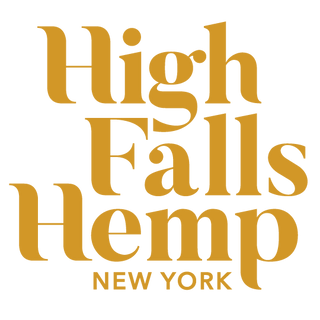 In mid-August, 2020, the New York State Department of Agriculture and Markets (Agriculture & Markets) sent a letter to all licensed hemp growers in the state, informing them that the hemp growing program they are administering will come to an end on October 31, 2020.
In mid-August, 2020, the New York State Department of Agriculture and Markets (Agriculture & Markets) sent a letter to all licensed hemp growers in the state, informing them that the hemp growing program they are administering will come to an end on October 31, 2020.
This is because the Department of Agriculture & Markets is unable to administer such a plan under the new rules issued by the USDA, which would become effective after October 31, 2020.
This is according to the USDA’s authority given to that agency under the Farm Bill of 2018. Currently, the department is administering the hemp growing program under the auspices of the Farm Bill of 2014, which expires on 10/31/2020.
At issue here are the USDA’s interim final rules (IFR) which have provisions that are not practical nor enforceable given the landscape of the hemp growing environment in the United States.
And since NY State’s Dept of Agriculture & Markets cannot create a program to accommodate all aspects of the USDA’s IFR, this is their way of pushing back on the USDA with the hopes that the USDA will change these rules to ones which are more practical and reflect the realities of hemp cultivation.
As a grower in NY state since 2018, we agree with the challenges cited about the USDA’s rules and believe if the whole country was under the new rules, that the hemp growing universe in the US would come to a screeching halt.
Here is a list of the aspects of the USDA’s IFR which are at the crux of the problem, in order of importance:
- Total THC requirement – the definition of hemp in the 2018 Farm Bill states that the maximum amount of delta-9 THC which the plant can contain is 0.3%. Delta-9 THC is that which makes people high, and technically, a higher level of delta-9 THC in a hemp plant is considered marijuana. However, the hemp plant produces many other variations of THC, including the acidic form of THC, known as THC-A. While THC-A does not cause one to get high (and THC-A has other wellness properties), it can be converted into delta-9 THC by heating it up, (also known as decarboxylation), with a loss of 12.3% of its weight. So, for purposes of calculations:
Total THC = delta-9 THC + (0.877 x THC-A)However, the USDA requires that for testing purposes, that the total THC levels need to remain at 0.3% or below.
-
In the current program administered by NY State’s Dept of Agriculture & Markets, there is a requirement to only test for delta-9 THC in the hemp we grow, and over the last two years, we have remained compliant with these rules.
-
- However, if we were to measure the amount of THC-A is in our plants when we harvested them, the total THC reading would be approximately 0.4% to 0.5%.
- When we convert the hemp into a more concentrated form of CBD via our extraction process into full-spectrum distillate, the THC levels range between 2% and 10%.
- Because CBD distillate is 80% pure, what happens is that most of the plant material is discarded in the extraction process, and likewise for THC, since most of the plant material is discarded, then a 0.2% THC reading can become amplified to the 2% level or higher
- When we create our finished products, we make sure that the finished products sold to the public have 0.3% THC or less.
- However, if we were to measure the amount of THC-A is in our plants when we harvested them, the total THC reading would be approximately 0.4% to 0.5%.
-
- The reality is that it is unfeasible to hold growers to the total THC test as there is not sufficient genetic stock available to create hemp plants which produce more than 10% CBD while keeping the total THC levels at 0.3% or less.
- The USDA rules also state that farmers have only 15 days to harvest their crops. This too is unfeasible in the NY state due to the challenges of the weather and availability of equipment capable of doing such, while keeping the valuable parts of the plant (CBD) intact. This too represents a problem.
- And if a farmer shows a total THC level higher than 0.3%, then they would have to destroy their crops, which would be an economic disaster. This too is another reason for NY state to object to the USDA rules.
- A final concern in the IFR is that the laboratories that are testing for THC must be DEA authorized labs. The bottom line is that while there are many labs around with the correct 3rd party credentials to test, they are not DEA certified.
The irony here is that since the IFR were released by the USDA last year, there have been many voices speaking up about the challenges of the IFR, and many states, including NY, administered their hemp growing programs under the auspices of the 2014 Farm Bill, which is due to expire on October 31, 2020. And this is where the rubber meets the road; something must give.
What are other states doing about the IFR?
In the US, there are a few states which have declared that they will follow the IFR of the USDA, notably Texas, Louisiana, Washington State, Ohio, Pennsylvania, New Jersey, and a few others. See this article for a full map of those states. It will be very interesting to see how these states are able to administer the USDA’s rules, and much will be learned based on how the harvest this year is regulated in those states following the USDA’s rules.
How are growers adapting to total THC rules in states which require Total THC compliance?
I met the president of a hemp/CBD company last year who discussed his firm’s compliance with the states’ total THC requirement. How do they get around it?
As shared with me by another CBD executive at the MMJ National Conference in December 2019, “Up until the time of the harvest season before total THC readings spike above 0.3%, they declare that they are harvesting and have the local state inspectors come out and take some pre-harvest samples.
The tests show compliant levels of THC according to the total THC requirement. As the plants mature prior to harvest, the total THC levels rise above 0.3% but they do not test for THC. They just test for CBD, so technically speaking, they remain in compliance: See no evil, hear no evil, and speak no evil. Welcome to the Wild West.”
What has been the history of the total THC compliance in NY state? From the day we obtained our hemp growers license in 2018, the ongoing discussion with the Department of Ag & Markets has been whether they are enforcing a delta-9 THC compliance regime or a total THC compliance regime.
2018 – in 2018, delta-9 THC compliance was the letter of the law in NY state
2019 – during the spring of 2019, the Department of Agriculture & Markets declared that they are going to follow a total THC compliance regime for this growing season. Since our data was sketchy from 2018 due to the stress placed on our plants due to flooding which occurred in August of 2018, we were not sure how the delta-9 and total THC compliance would fare. (Total THC was higher due to the stress of the flooding in 2018).
Then in August of 2019, the Department of Agriculture & Markets changed the THC compliance regime back to delta-9 THC only.
2020 – delta-9 THC compliance requirements were declared early so there would be no confusion amongst farmers.
This is happening at a time when farmers are still trying to figure out what to do with the hemp they grew in 2019 as the price of hemp has fallen dramatically, forcing many farmers to cut back on the amount of hemp they are growing or to not grow at all.
At High Falls Hemp, we have cut back on the amount of hemp we are growing this year, and based on our exuberant harvest from the 2019 growing season, we have enough hemp on hand to convert into CBD to meet our finished products needs for a few years.
We applaud the efforts of the NY State Department of Agriculture & Markets to stand up to the USDA because while other states might agree to adhere to the USDA rules, it is likely that there will be many sorry hemp growers if those rules are enforced to the letter of the law.
Will state agricultural agencies follow the rules as mandated by the USDA’s IFR, or are they likely to give their farmers a break? Stay tuned as the 2020 harvest season is almost upon us and we will know much more within a month or two.
One thing is for sure, at High Falls Hemp NY, we closely adhere to and share with you updates as they become available. As soon as this issue develops further, we’ll be sure to provide you with the most recent details.
